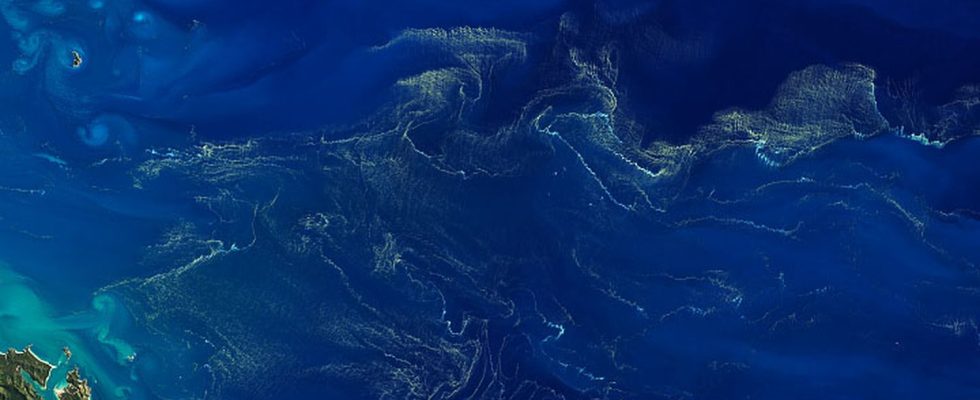In the Pacific Ocean, Ifremer’s oceanographic vessel is studying its ability to trap carbon.
Article written by
Posted
Reading time : 1 min.

Imagine a place where microalgae swarm in the middle of an ocean desert, un area of 400,000 km2 all the same, where biological activity is strongly stimulated with plankton, micro-organisms which develop on the surface and which capture carbon dioxide. This marine forest visible from space is located off the Tonga archipelago in the South Pacific.
>> Pollution: 240 species of “plastic-eating” fungi and bacteria identified in a swamp in China
UA team of French oceanographers, led by researchers Sophie Bonnet from the IRD and Cécile Guieu from the CNRS, after several weeks at sea, has just demonstrated the full potential of this carbon sink. VSe potential comes from submarine volcanoes, because the volcanoes act like farmers in their fields trying to fertilize the soil. IThey are shallow – some 500 m deep – and they reject en masse an essential element for life: iron. VSIt is he who stimulates the biological activity and feeds in particular: the diazotrophs. These are microscopic organisms that play an essential role here since they make it possible to capture and sequester CO2 in the deep ocean.
Stimulate phytoplankton activity
Tropical oceans, too, can be carbon sinks. Oe know that the oceans are essential carbon sinks. They capture a quarter of our CO2 emissions. But not all have the same efficiency. Nutrient-rich temperate and polar oceans are known to be major carbon sinks.
On the other hand, the oceans of tropical zones, such as the Pacific, are sometimes called deserts and are considered less effective. Except there, indeed, in this region of Tonga, thanks to the natural fertilization mechanism. This fertilization could be brought about artificially. The idea would be to inject nutrients such as iron into the ocean to stimulate the activity of phytoplankton and multiply the micro-organisms that capture CO2. That would make the ocean an even more efficient carbon sink. But these artificial fertilization techniques have already been tested. And unfortunately, the results are inconclusive, even counterproductive.
